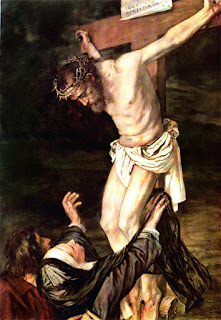 Like Mary and the Beloved Disciple we must be DRAWN OUT and take the graces received from the Mass and bring Jesus’ pierced heart of love to all those we encounter. We can look to Mary’s example as she left the hill of Calvary. She was DRAWN OUT to be a mother to the Apostles and all the faithful. Her identity as mother didn’t end at the death of Jesus, but was transformed into something different, something very beautiful. This happened because of her openness to the Father and trust in His will. She received all from the Father in love including her Son and was able to give Her Son back to the Father in love as well. She could not keep the love for Her Son to herself, she had to give it away to all those who came to her. Do we as Catholics do this? When people encounter us do they receive the merciful love of the Father poured out through the Son? Do they leave our presence knowing the love of the Father or do they leave us feeling unwanted and unloved? They should leave our presence feeling deeply loved just as the disciples did after being in Mary’s presence.
Like Mary and the Beloved Disciple we must be DRAWN OUT and take the graces received from the Mass and bring Jesus’ pierced heart of love to all those we encounter. We can look to Mary’s example as she left the hill of Calvary. She was DRAWN OUT to be a mother to the Apostles and all the faithful. Her identity as mother didn’t end at the death of Jesus, but was transformed into something different, something very beautiful. This happened because of her openness to the Father and trust in His will. She received all from the Father in love including her Son and was able to give Her Son back to the Father in love as well. She could not keep the love for Her Son to herself, she had to give it away to all those who came to her. Do we as Catholics do this? When people encounter us do they receive the merciful love of the Father poured out through the Son? Do they leave our presence knowing the love of the Father or do they leave us feeling unwanted and unloved? They should leave our presence feeling deeply loved just as the disciples did after being in Mary’s presence. Like Mary and the Beloved Disciple we must be DRAWN OUT and take the graces received from the Mass and bring Jesus’ pierced heart of love to all those we encounter. We can look to Mary’s example as she left the hill of Calvary. She was DRAWN OUT to be a mother to the Apostles and all the faithful. Her identity as mother didn’t end at the death of Jesus, but was transformed into something different, something very beautiful. This happened because of her openness to the Father and trust in His will. She received all from the Father in love including her Son and was able to give Her Son back to the Father in love as well. She could not keep the love for Her Son to herself, she had to give it away to all those who came to her. Do we as Catholics do this? When people encounter us do they receive the merciful love of the Father poured out through the Son? Do they leave our presence knowing the love of the Father or do they leave us feeling unwanted and unloved? They should leave our presence feeling deeply loved just as the disciples did after being in Mary’s presence.
Like Mary and the Beloved Disciple we must be DRAWN OUT and take the graces received from the Mass and bring Jesus’ pierced heart of love to all those we encounter. We can look to Mary’s example as she left the hill of Calvary. She was DRAWN OUT to be a mother to the Apostles and all the faithful. Her identity as mother didn’t end at the death of Jesus, but was transformed into something different, something very beautiful. This happened because of her openness to the Father and trust in His will. She received all from the Father in love including her Son and was able to give Her Son back to the Father in love as well. She could not keep the love for Her Son to herself, she had to give it away to all those who came to her. Do we as Catholics do this? When people encounter us do they receive the merciful love of the Father poured out through the Son? Do they leave our presence knowing the love of the Father or do they leave us feeling unwanted and unloved? They should leave our presence feeling deeply loved just as the disciples did after being in Mary’s presence.Remember, no matter how your Lent has begun, it is never too late to start anew in your resolutions. As St. Francis would say, “Let us begin again, for up to now we have done very little or nothing!”
 – Sister M. Judith, FSGM
– Sister M. Judith, FSGM Our winter here in Alton has been unique this year, fluctuating between cold and warm spells, complete with December flooding and winter snowstorms. The result is that daffodils and even summer bulbs are already rising up from their dark winter sleep to pierce the wet earth and greet the sun. Many of us Sisters have marveled on the beauty of the glowing yellow-orange crocuses that have emerged from their beds of dead leaves and wet soil. They make me smile and remember that life and hope can spring from death and darkness in our own lives, just as these little tendrils and delicate flowers do.
What are the situations in our lives that move us to draw closer to God in suffering or darkness? These times call for our acts of faith, hope, and trust in Him – in a loving God who desires the best for us in His Will. Thus, even in times of “drought,” as we read about in the Readings for Thursday of the Second Week of Lent, if we feel like a “barren bush,” but trust in the Lord, we can stretch out our “roots” to Him and find strength and grace (Jer. 17:6-8). God and His promises are trustworthy; He will bring us safely from the Passion to the Resurrection. Then we will blossom and flourish like new growth from the winter ground, pushing up through the bracken of our trials to meet the sunlight of His Love and Grace.
– Sister M. Christiana, FSGM
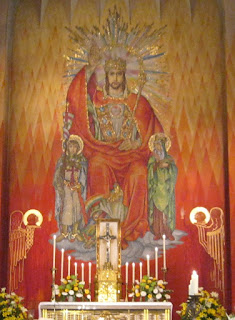 In this time of Lent, it seems right to “stand under judgment.” Not judgment for condemnation, but judgment for mercy, for forgiveness, for conversion of life, for satisfaction for sin. In the moment that I stand before Christ as my judge, while still on the way, I see what makes each moment most important; I see what to strive for. In that moment, life becomes real.
In this time of Lent, it seems right to “stand under judgment.” Not judgment for condemnation, but judgment for mercy, for forgiveness, for conversion of life, for satisfaction for sin. In the moment that I stand before Christ as my judge, while still on the way, I see what makes each moment most important; I see what to strive for. In that moment, life becomes real.  What is the sacrificial love of a mother? It is the self-sacrifice made to love her children. Mary’s self-sacrifice to be there with Christ, her Son, in His passion was the selfless love that united her with Him. Her heart was pierced with 7 swords in the agony of watching her beloved Son endure a cross that He did not deserve, but which He embraced for the love of the Father and mankind. Could she not have said to Jesus, “You don’t have to do this, there are other ways. Do you know how much pain You are causing me and those who love you?” She knew He could have chosen any other way to save us, but this was the Father’s will, and so in silent love Mary trusted. If the world is suffering, why do you choose to remain with it in compassion? The invitation to motherhood responds with the proposal, “Why does a mother make any of the sacrifices she makes? Why do we follow Christ who chose to be poor, a suffering servant? So that He could be there for any of His children in their need and say, “I understand,” so that He could save us. As a Mother, Mary shared intimately in that call.
What is the sacrificial love of a mother? It is the self-sacrifice made to love her children. Mary’s self-sacrifice to be there with Christ, her Son, in His passion was the selfless love that united her with Him. Her heart was pierced with 7 swords in the agony of watching her beloved Son endure a cross that He did not deserve, but which He embraced for the love of the Father and mankind. Could she not have said to Jesus, “You don’t have to do this, there are other ways. Do you know how much pain You are causing me and those who love you?” She knew He could have chosen any other way to save us, but this was the Father’s will, and so in silent love Mary trusted. If the world is suffering, why do you choose to remain with it in compassion? The invitation to motherhood responds with the proposal, “Why does a mother make any of the sacrifices she makes? Why do we follow Christ who chose to be poor, a suffering servant? So that He could be there for any of His children in their need and say, “I understand,” so that He could save us. As a Mother, Mary shared intimately in that call. 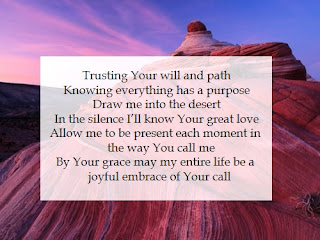
Duh, gw ga ada kerjaan nih di kamar, udah disini sendirian, kamarnya super mini, ga ada springbed (cuma pake futon / kasur ala jepang yang sering nobita pake hehe), ga bisa tidur pula! ya udah biar gw ngantuk, gw nge-post pelajaran bahasa jepang aja deh, kali2 ada yang tertarik.
Buat belajar bahasa jepang, intinya pertama2 kita harus belajar 3 tipe huruf, yaitu hiragana, katakana, dan kanji. banyak orang awam yang sblm belajar bahasa jepang udah ketakutan gara2 huruf2 ini, padahal buat belajar huruf2 ini sama skali ga susah. sebelum gw kasih diagram huruf ini, gw kasih tau dulu perbedaan2nya.
1. Hiragana
Huruf hiragana itu adalah huruf standard jepang (kayak abjad di alphabet lah). jadi biasanya anak2 tk kalau belajar tulisan, mulai dari hiragana dulu. sementara kalau udah sd, udah mulai belajar kanji. oh iya, kalo mau blajar jepang, at least harus bisa baca hiragana. gampang kok, coba2 aja di ulang2, paling dalem sehari juga udah apal.

Chart hiragana di atas adalah struktur hiragana yang paling dasar. kalo smua hiragana yang ada di chart atas udah apal smua, kita lanjutin ke bawah yok! yang di bawah tinggal tambahan2nya doang kok. perhatiin deh, cuma beda titik dua dan buletan. tapi kalo kita tambahin titik dua atau buletan di sebelah atas tulisan hiragana, bunyinya bakal berubah. kita liat deh bedanya :

Kalo chart yang di atas udah bisa juga, kita lanjutin ke bagian terakhir. jadi kita bisa ngegabungin huruf hiragana dengan huruf hiragana yang kecil. nih kita liat bunyi2nya :
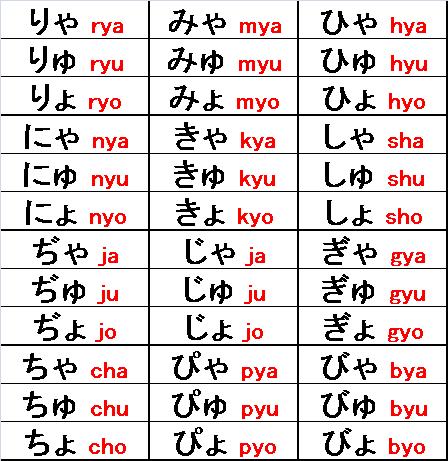
Skarang coba deh baca kalimat di bawah ini, pelan2 aja :

Kalo kita liat contoh nomor 1, knapa huruf “ha” bacanya jadi “wa”? huruf “ha” disitu fungsinya hanya sebagai penanda subjek, dimana subjeknya kan “saya” / “watashi”. jadi kalo kita nulis “ha” yang berfungsi sebagai penanda subjek doang, bacanya menjadi “wa”. oh iya, ini ada web utk belajar cara nulis hiragana yang bener : klik disini
2.Katakana
Huruf katakana adalah huruf yang digunain buat nulis kata2 serapan. berhubung abjad standard jepang ga bisa mencakup seluruh pronounciation dari bahasa lain (kayak misalnya huruf V, huruf W, dll), orang jepang membuat beberapa huruf2 khusus untuk melafalkan bunyi2 yang ga ada di bahasa standard jepang. jadi untuk penulisan nama orang2 asing (kayak kita2 gini), harus make huruf katakana.

Sama kayak hiragana, ada 5 huruf dalam katakana yang bisa berubah kalo ditambahin titik dua atau buletan :
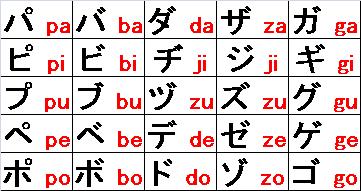
Karena di bahasa jepang ga ada pelafalan huruf “v”, bunyi “wi” dan beberapa bunyi lain, untuk men-jepang-kan bahasa asing yang mengandung bunyi2 tsb ada beberapa tambahan kombinasi huruf di katakana: